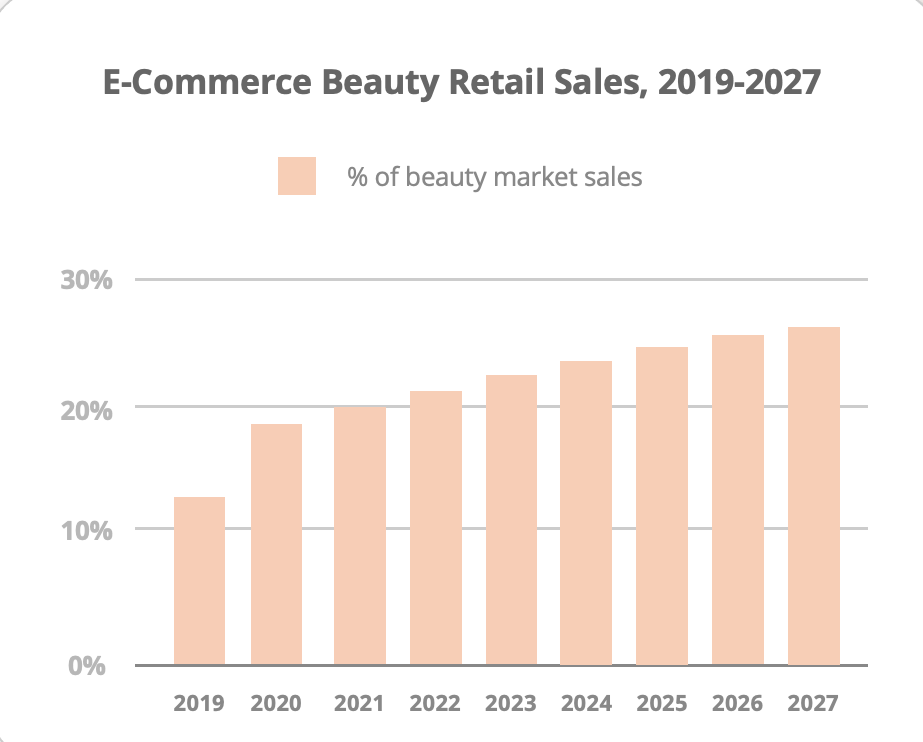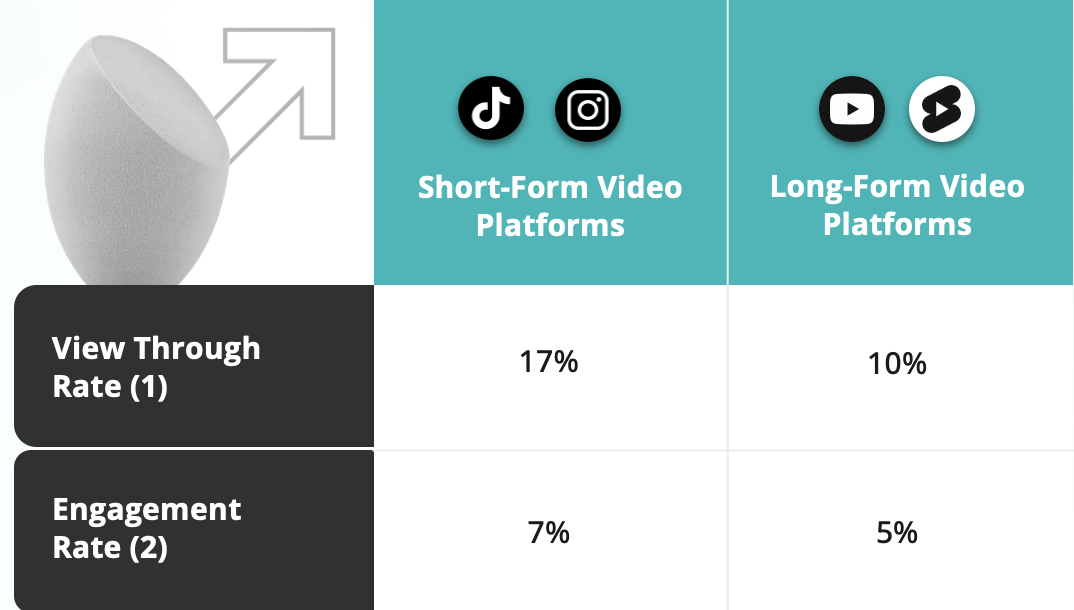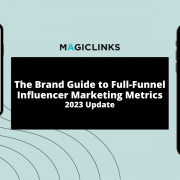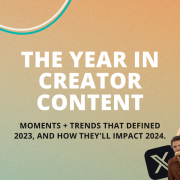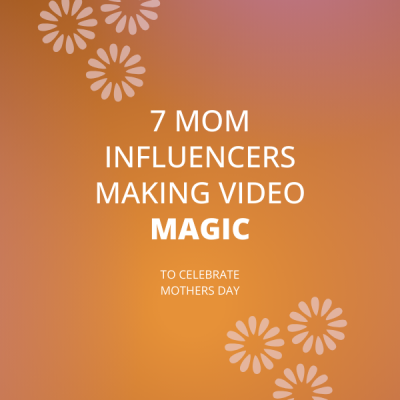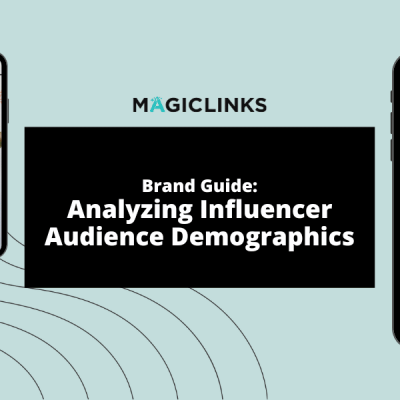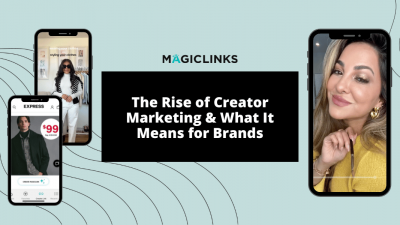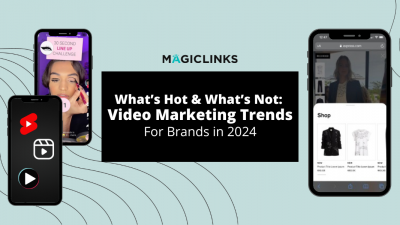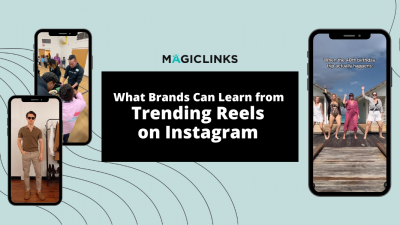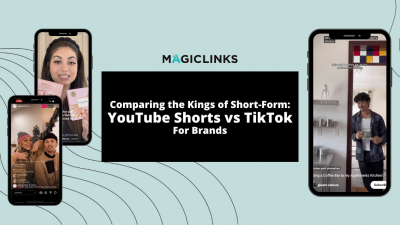Beauty continues to evolve at a rapid pace – accelerated by the tastemakers and change evokers of the modern day: social media creators. Successful influencer marketing for beauty brands requires deep knowledge of the players, platforms, and paths to purchase.
We’re bringing that knowledge to you! We analyzed MagicLinks’ $3B+ GMV proprietary data over the last 12 months, focusing on 500 beauty brands and 2,000 creators making waves in beauty, in order to help brands better understand things from the inside-out, and build smarter influencer strategies.
MagicLinks Beauty Insights
1. Beauty retail sales continue to grow.
Online beauty purchases have increased at a dramatic rate since 2019 (pandemic), and according to our friends at McKinsey, e-commerce will make up 26% of beauty by 2027.
Social media creators are responsible for the bulk of this growth by inspiring trust pre-and-post purchase via popular platforms like YouTube, TikTok, and Instagram.
New and returning fans of beauty are purchasing both online and offline, motivated by creator education, engagement, and inspiration – video is the clear winner in achieving this.
2. The impact beauty creators have on audiences and brands is stronger than ever.
Today, measurement of influencer impact remains a major brand challenge when it comes to creating a smart creator commerce plan.
Beauty creators have connections with audiences that are stronger than oak. Not only are they calling beauty to higher standards of authenticity, inclusivity, and sustainability; but they are also transforming the way shoppers consider brand ethos, ingredients, and integrity when purchasing.
Referencing the chart below, a single video can drive revenue impact of a half million dollars – or more!
Double tap: It’s important to consider lift from influencers as much as last click revenue impact.
3. Beauty creators are ramping up their rates.
Overall, YouTube’s top beauty creators have achieved exceptional audience growth over the last year.
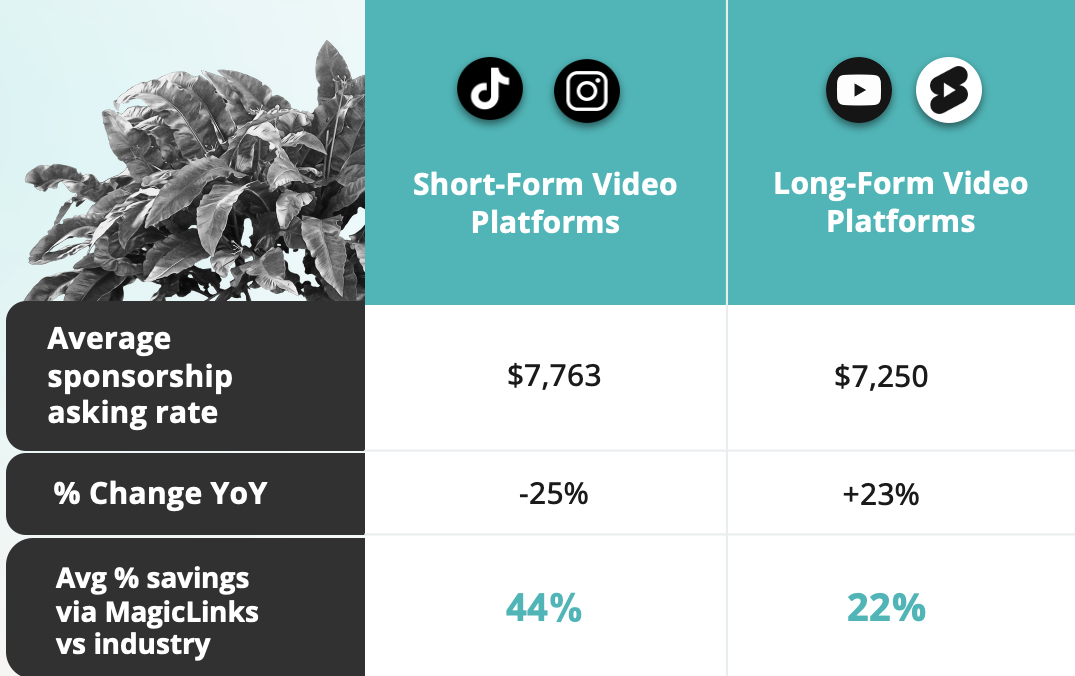
With growth, they have maintained peak engagement rates and the ability to deliver ROI, thereby higher asking rates with less room for negotiation.
Influencer pricing and payment continue to be challenging and uncomfortable for many brands. Having a partner to guide and streamline negotiations is paramount to achieving ROI.
4. Understanding top-of-funnel is now essential for brands.
Both short & long-form videos continue to reward brands with strong viewership and engagement, as we see with MagicLinks’ current benchmarks for long-form and short-form social commerce video.
Beauty brands should consider a healthy mix of both mediums in order to access diverse audiences and achieve full-funnel results that are at or above average.
5. Brands are seeing success leveraging DTC and big-box retail partners.
With the rise of direct-to-consumer (DTC) beauty brands, we’ve seen an uptick in all of beauty making the move to acquire and maintain relationships with customers more directly.
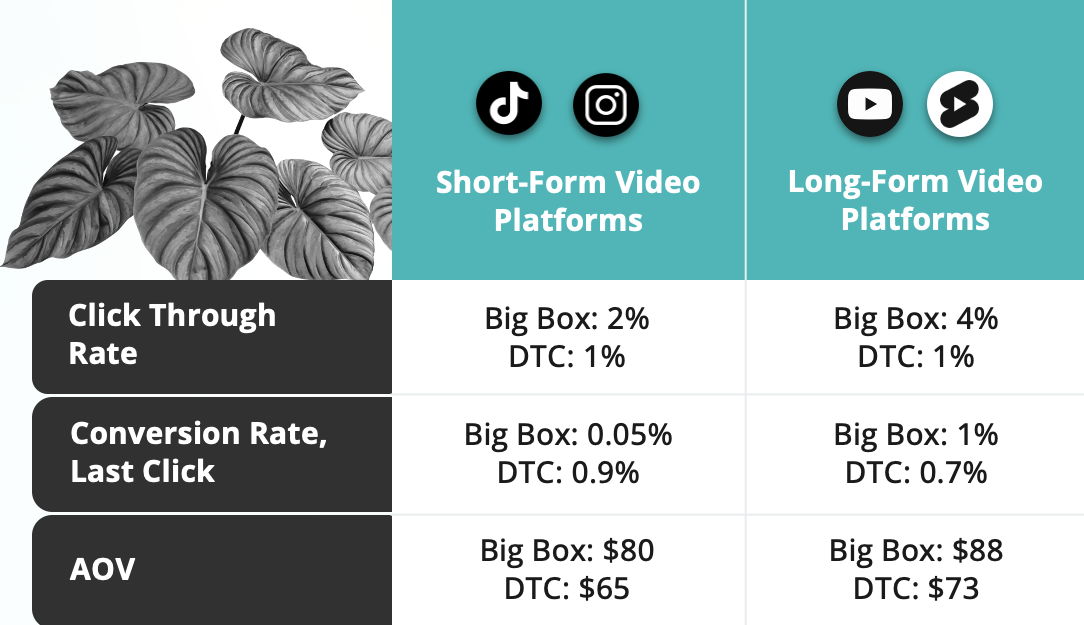
For brands with both DTC and retail partners, leveraging both channels in their influencer programming is paramount, and can deliver a great deal of efficiencies in growth.
To the left, we share our middle- to bottom-of-funnel benchmarks to consider for both.
Get more influencer marketing strategies for beauty brands
As social media platforms continue to evolve and new trends emerge, it is becoming increasingly important for brands and creators to stay up-to-date with the latest trends and adapt their strategies accordingly. Get MagicLinks’ full strategy guide for beauty brands, which highlights more data plus the tactics that successful beauty brands are using in connected commerce.
MagicLinks is proud to partner with over 35k vetted influencers and over 5k world-class brands, providing strategies, tactics, and execution on the latest social commerce trends.
To learn more about MagicLinks or request a proposal, get in touch with our team today.

